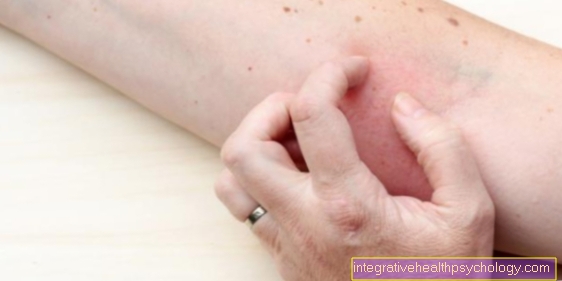Potassium chloratum
German term
Potassium chloride

Use of potassium chloratum for the following diseases in homeopathy
- Throat catarrh
- Otitis media
- bronchitis
- chronic swelling of the lymph glands
- Conjunctivitis
Use of potassium chloratum for the following symptoms / complaints
- generally white-gray secretions
- white-gray coating on the root of the tongue
- Glands swollen (soft)
- Inflammation and obstruction of the Eustachian tube
- Otitis media
- white coated canker sores of the oral mucosa
- white plugs on the tonsils
- Bronchitis with thick, white mucus
In the case of pneumonia, potassium chloratum promotes the absorption of inflammatory fluid into the cells.
Active organs
- throat
- Pharynx
- nose
- eyes
- Ears
- Lymph glands
- Bronchi
Usual dosage
The recommended dosage is usually D6, more rarely D12. The number of tablets to be taken is usually five a day, but it can vary. With globules, the dosage is usually different. In general, a trained specialist should be consulted with the dosage plan, as the dosage depends not only on the disease and symptoms to be treated but also on many other individually different factors.
Potassium chloratum as an ointment
Like most other Schüssler salts, Kalium chloratum can also be used externally as an ointment. An ointment with this active ingredient can help especially with blocked glands or glands that have been attacked by toxins.
The stress can manifest itself in various ways, such as inflamed joints, swelling of the skin or skin changes such as warts or spider veins. Acne that gets worse when exposed to environmental toxins (smog) or from food (alcohol) can also respond to treatment with potassium chloratum. Another possible application of potassium chloratum is an often reddened and heated skin. It can also be used after minor burns or scalds, but then treatment with Ferrum phosphoricum should first be attempted and potassium chloratum should be used if this treatment does not work. Applying the ointment is usually recommended two to three times a day. It is usually sufficient to apply a thin layer of the potassium chloratum ointment to the relevant areas and allow it to be absorbed.





























